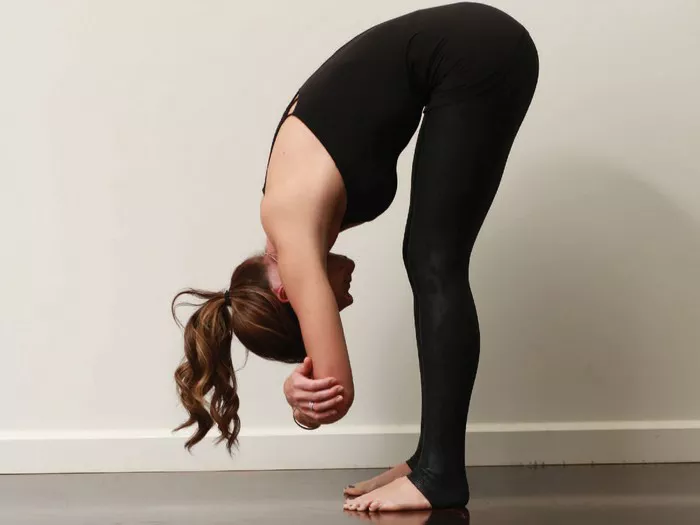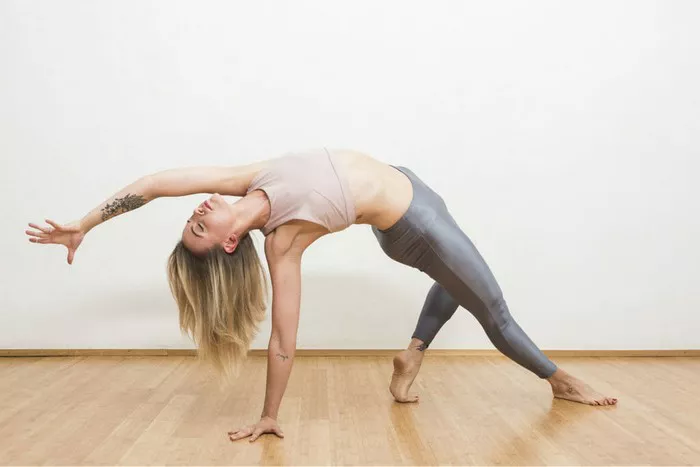The allure of gold has fascinated humanity for millennia, driving exploration, conquest, and commerce. Yet, amidst the quest for material wealth, there lies another treasure — the wealth of health. Lifestyle diseases, characterized by their association with an individual’s daily habits and choices, pose a significant threat to global health. Conditions such as heart disease, diabetes, obesity, and hypertension are rampant, fueled by sedentary lifestyles, poor dietary habits, and stress. In this article, we embark on a journey to discover the richest gold mine in the world — not in terms of monetary value, but in the priceless wealth of health. We explore how yoga, an ancient practice that integrates the mind, body, and spirit, holds the key to unlocking this treasure trove in today’s fast-paced world.
Yoga as a Holistic Approach:
Yoga, derived from the Sanskrit word “yuj,” meaning to yoke or unite, is a holistic system originating from ancient India. It encompasses a diverse range of practices, including physical postures (asanas), breath control (pranayama), meditation, and ethical principles. At its core, yoga seeks to harmonize the individual’s physical, mental, and spiritual dimensions, fostering a sense of balance and well-being. In an era marked by relentless busyness and constant connectivity, yoga offers a sanctuary of stillness and self-awareness, allowing individuals to navigate life’s challenges with greater resilience and clarity.
Benefits for Heart Health:
The heart, a vital organ responsible for pumping oxygen-rich blood throughout the body, is susceptible to the detrimental effects of modern lifestyles. Fortunately, yoga offers a panacea for heart health, with numerous studies demonstrating its efficacy in reducing cardiovascular risk factors. Practices such as Cobra pose (Bhujangasana) and Bridge pose (Setu Bandhasana) not only stretch the chest and abdomen but also stimulate the cardiovascular system, lowering blood pressure and cholesterol levels. By incorporating these poses into a regular yoga practice, individuals can fortify their hearts against disease and cultivate a profound sense of vitality.
Improving Posture and Musculoskeletal Health:
In an age dominated by sedentary occupations and digital devices, poor posture has become endemic, contributing to musculoskeletal disorders and chronic pain. Yoga, with its emphasis on alignment and awareness, offers a remedy for this modern malaise. Poses like Mountain pose (Tadasana) and Warrior pose (Virabhadrasana) instill strength and stability in the core muscles, while also promoting proper spinal alignment. Through consistent practice, individuals can realign their bodies, alleviate discomfort, and move with grace and ease.
Enhancing Flexibility and Mobility:
As the body ages, maintaining flexibility and mobility becomes increasingly important for preserving overall health and independence. Yoga, with its gentle yet effective approach, provides a fountain of youth for the musculoskeletal system. Poses such as Triangle pose (Trikonasana) and Forward Fold (Uttanasana) target tight muscles and joints, promoting suppleness and reducing the risk of injury. By embracing these practices, individuals can defy the constraints of age, moving with freedom and agility throughout their lives.
Boosting Immunity:
The immune system serves as the body’s primary defense against pathogens and illness, yet its efficacy can be compromised by chronic stress and inflammation. Here, yoga emerges as a potent ally, bolstering immunity through its stress-reducing and relaxation-promoting effects. By engaging in mindful movement and breathwork, practitioners can stimulate the parasympathetic nervous system, facilitating a state of deep rest and rejuvenation. As stress levels diminish and inner peace flourishes, the body’s natural defenses are fortified, rendering it more resilient to disease.
Yoga for Mental Health:
In addition to its physical benefits, yoga exerts a profound influence on mental well-being, offering solace to the restless mind and solace to the troubled soul. Through practices such as meditation and mindfulness, individuals can cultivate greater self-awareness and emotional resilience, transcending the incessant chatter of the ego. Studies have shown that yoga can alleviate symptoms of anxiety, depression, and post-traumatic stress disorder, providing a safe harbor in times of turmoil. By nurturing the mind-body connection, yoga invites practitioners to embark on a journey of self-discovery and self-compassion, leading to lasting transformation and inner peace.
Practical Tips:
Incorporating yoga into daily life need not be daunting or complex. Begin by setting aside a few minutes each day for simple stretches and deep breathing exercises. Experiment with different styles of yoga, such as Hatha, Vinyasa, or Yin, to find what resonates with you. Invest in a quality yoga mat and props to enhance comfort and support during practice. Consider joining a yoga class or online community for guidance and accountability. Remember, consistency is key — even a brief daily practice can yield profound benefits over time.
Scientific Evidence:
The efficacy of yoga in preventing and managing lifestyle diseases is supported by a growing body of scientific research. A meta-analysis published in the European Journal of Preventive Cardiology found that yoga significantly reduced key cardiovascular risk factors, including blood pressure, cholesterol, and body mass index. Another study published in JAMA Internal Medicine reported that yoga was comparable to aerobic exercise in improving mood and quality of life among individuals with major depressive disorder. These findings underscore the therapeutic potential of yoga as a holistic approach to health and well-being.
Lifestyle Integration:
To truly harness the benefits of yoga, it is essential to integrate its principles into all aspects of life. Adopt a balanced and nutritious diet rich in whole foods, fruits, and vegetables to nourish the body from within. Prioritize regular physical activity, complementing yoga with activities such as walking, swimming, or cycling to promote overall fitness. Cultivate supportive relationships and engage in activities that bring joy and fulfillment, fostering a sense of connection and purpose. By embracing yoga as more than just a physical practice but as a way of life, individuals can unlock the full spectrum of its transformative power.
Conclusion
In the quest for health and well-being, yoga stands as a beacon of light, guiding us back to the source of our vitality and resilience. As we unearth the riches of this ancient practice, we discover not only physical strength and flexibility but also mental clarity and emotional balance. By embracing yoga as a holistic approach to health, we cultivate a treasure trove of wellness that transcends the limitations of time and circumstance. In the crucible of practice, we forge a path to wholeness and healing, reclaiming our birthright as stewards of our own well-being.



















